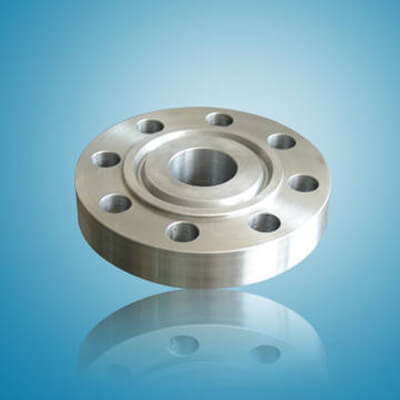One of the many types of flanges used frequently in the plumbing and pipeline sectors is an RTJ flange or Ring Type Joint Flange. A machined metallic ring with a deep groove carved into its face is called a Ring Type Joint Flange (RTJ). A metal ring that is resting in this groove is crushed when the flange's connecting bolts are tightened. A tight-fitting, leak-proof seal is created on the pipe or connection as a result of this compression. While Carbon Steel Ring Joint Flanges are spill-proof, Stainless Steel Ring Type Joint Flanges are typically used in high-pressure and high-temperature applications.
RTJ flanges typically feature a raised face with a groove in the face of the flange, but unlike weld neck raised face flanges, the raised face does not contain pressure.
The R Type, RX Type, and BX Type are the three different types of Ring Type Joint gasket designs. The R Type, which is available in either an oval or an octagonal form, is the most often utilized type. The oval type, which had an oval-shaped groove machined into the Flange Face, was the original design. Because of how well it seals, the octagonal RTJ, a variation of the oval form, is the most popular. The groove design is the same for the R and RX octagonal gaskets. The RX is more efficient in environments with vibration and shock loading because it is made to withstand pressures of up to 5000 psi. The BX Type gasket can withstand pressure ratings of up to 20,000 psi and should only be used with API 6BX Type Flanges.
Characteristics of RTJ Flanges
RTJ flanges use a steel ring as a gasket in place of the flat composite material gaskets. The machined groove supports the gasket.
A ring-type joint flange may have an elevated face, but it does not contain the pressure. The excess load is instead passed to the elevated faces if the RTJ flanges come into touch with each other while being tightened, maintaining the joint's integrity during overtightening, vibration, and movement.
The deformation of the soft metallic gasket, which flows into the microfine structure of the hard flange material, produces the sealing.
Both assembly and disassembly are fairly simple.
0






